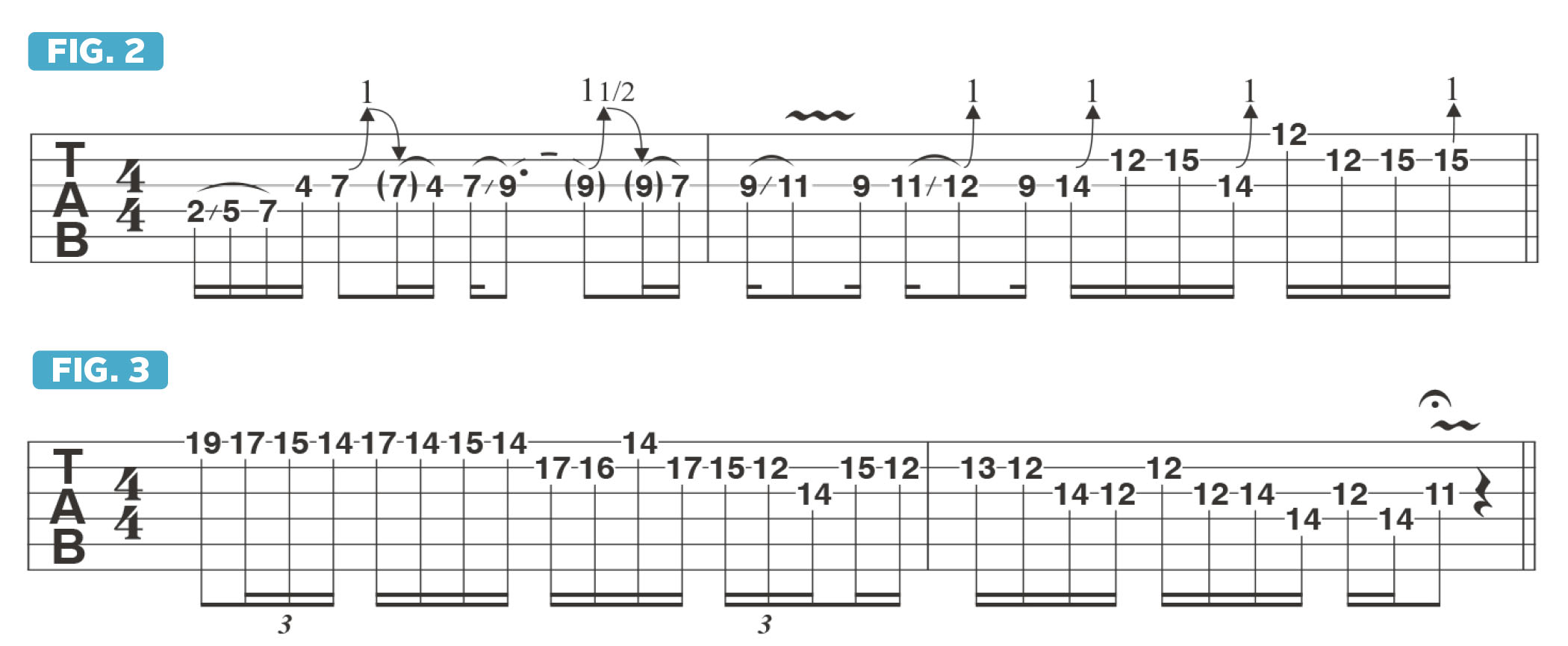“I think of the guitar as the singer, and the emotive qualities inherent in the human voice should be exhibited in the single-note lines”: How to connect melodic phrases using chromaticism and string bending, with Andy Timmons
The Ibanez signature artist presents an approach that will make your licks sing and help your solos stretch out, joining the dots between different musical ideas
In this lesson, I’d like to explore musically effective approaches to soloing over a 16-bar progression in the key of E minor: Em - A7 - Em - A7 - Cmaj7 - B7b9 - Cmaj - B7b9. For this improvised solo, I’ll incorporate some string bending, along with a little bit of chromaticism.
Figure 1 presents the solo, which ends with an additional bar that resolves the final phrase back on the tonic chord, Em. The majority of the phrases are based on the E minor pentatonic scale (E, G, A, B, D), starting with a pickup into bar 1.
As always, my goal is to create strong, “hooky”-sounding melodies delivered with expressive, vocal-like articulations. The legato sound of hammer-ons, pull-offs, slides, bends and vibratos serve to emulate that vocal quality.
I think of the guitar as the singer, and the emotive qualities inherent in the human voice should be exhibited in the single-note lines.
For example, in bar 2, I slide up from E, on the G string’s 9th fret, to F# at the 11th fret and then bend that note up a half step to G, followed by a slide up to G at the 12th fret, which I then bend up a whole step to A and apply some vibrato.
To my ears, this type of quick, slithering movement emulates the delivery of a vocal part. At the end of bar 3 into bar 4, I bring F# into the mix, alluding to the sound of the E minor hexatonic scale (E, F#, G, A, B, D), as well as the E Dorian mode (E, F#, G, A, B, C#, D) and E Aeolian (E, F#, G, A, B, C, D). This F# note comes into play again at the end of bar 4.
At the end of bar 6 into bar 7, I add the C# note from E Dorian, as this note functions here as the major 3rd of A7. In the second half of this bar, I initiate an ascending quarter-note triplets phrase built from alternating bends on the G string and fretted unison notes on the B string that serve to set up Cmaj7 in bar 9, over which I bend D, 2nd string, 15th fret, up to E, the major 3rd of C.
All the latest guitar news, interviews, lessons, reviews, deals and more, direct to your inbox!
The chromaticism arrives on beat 2 of bar 12, as I descend through A, G#, G and F#, followed by a long descending line that carries us through to the end of the solo. Again, these lines are based on E minor hexatonic.
Figure 2 illustrates how I use slides and bends to ascend through a solo phrase. Figure 3 offers a closer look at the chromaticism that finds its way into the end of the solo.
The bottom line is that I want the solo to sound musical. Any time I start thinking too much, it’s never a good thing! Too much analytical brain activity can take you away from being “in the middle” of the music in real time, which is where you should really want to be when improvising.
Andy Timmons is a world-renowned guitarist known for his work with the Andy Timmons Band, as well as Danger Danger and Simon Phillips.



